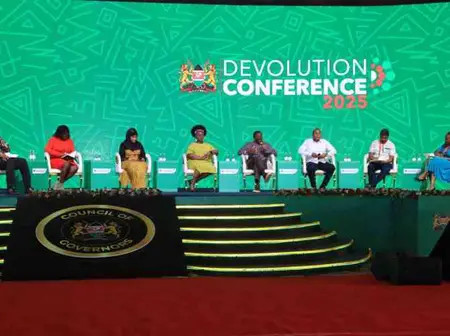Kenya’s 2010 Constitution ushered in a new dawn for governance. By creating 47 county governments, it aimed to move power, resources, and decision-making closer to the people. Devolution stood as the antidote to centralisation, opening the doors of government to citizens who had long been locked out. In 2013, Kwale County hosted the inaugural Devolution Conference, framed as an “experience-sharing” gathering where pioneer governors and devolution champions traded lessons from the first year of county governments. In its early years, the conference served as a forum to reflect on progress, share best practices, and shape the future of devolution. But over time, it has morphed into something quite different: a polished, elite affair that distances itself from the citizens it claims to serve. The program tells the story. Cabinet Secretaries, governors, CEOs, and heads of mission dominate the program, delivering well-written speeches from well-decorated podiums. Applause follows, perhaps a standing ovation, before the dignitaries vanish to attend other “critical engagements.” The conference floor turns into a one-way street: government talking to government or development partners, leaving little space for delegates to engage. Meanwhile, the exhibition spaces, which are supposedly the heart of “devolution in action”, receive little attention from the very leaders whose policies they aim to showcase. If the devolution conference truly serves as a learning exchange, why do leaders ignore the most practical, demonstrative part of the event? The conference prides itself on being designed using “international standards,” yet its format locks out ordinary Kenyans. All delegates (citizens, donors, civil society groups, and development partners) are charged a flat rate of KES 20,000 registration fee and are required to register entirely online. For most Kenyan households, KES 20,000 is not spare cash; it is school fees, rent, medicine, or transport. With competing needs, priority demands that basic needs be served first. Yes, the conference pumps short-term benefits into the host county’s economy. Hotels fill up, taxis run nonstop, vendors make brisk sales, and service providers like audio-visual teams and interpreters cash their cheques. But once the tents come down and the guests leave, the boost evaporates. Unless we connect the conference’s energy and resources to long-term structural improvements, we leave behind little more than a memory. The truth is, the Devolution Conference has become a conversation mainly between the two levels of government, with development partners sprinkled in. Of course, these groups must coordinate. But do they need an expensive, high-profile conference to repeat boardroom discussions? If the real audience is donors, then it should not be called a devolution conference; perhaps it should be something like a devolution development partners’ conference and not a citizen-branded event that barely hears from citizens. So, where are the citizens? They sit on the sidelines, catching snippets of the event on television, radio, newspapers or social media. If we truly want to identify “best practices,” shouldn’t we ask the people who live with the consequences of devolution every day? Devolution was not built for press releases; it was built for real-life service delivery, accountability, and citizen voice. If the official conference refuses to make space for that voice, perhaps we need a separate Citizens’ Devolution Conference. One that is free for all to attend and that is grounded in lived experiences. A convening where citizens speak, not just listen. Devolution was meant to remove the hurdles that keep citizens from influencing the decisions that affect them. If the flagship event meant to celebrate devolution recreates those same barriers, how much of the devolved system itself repeats the same mistakes? This year’s theme, “For the People, For Prosperity: Devolution as a Catalyst for Equity, Inclusion, and Social Justice”, should be more than a slogan. It should guide decision-making every day, in every county. It is laudable that the Council of Governors has begun rethinking the design of the conference, starting with this year’s conference. For the first time, it has allowed non-state actors to host side events aligned with the theme. That is a start. But more must follow. For instance, the COG could work with the established county structures to identify citizens’ representatives. For these representatives (ordinary citizens), the COG could scrap the registration fee. Secondly, the COG can consider reducing the delegate fee for other participants (state and non-state) to increase participation. Create a dedicated citizen tent in the host town, complete with chairs, screens, water, and a moderator who channels citizens’ feedback directly into the plenary. No dress codes. No gate fees. Just citizens speaking into the process that shapes their lives. If devolution is for the people, then the Devolution Conference must be too. Otherwise, we’ll turn what should be a bridge to inclusion into yet another wall that shuts people out.

Leave a Reply